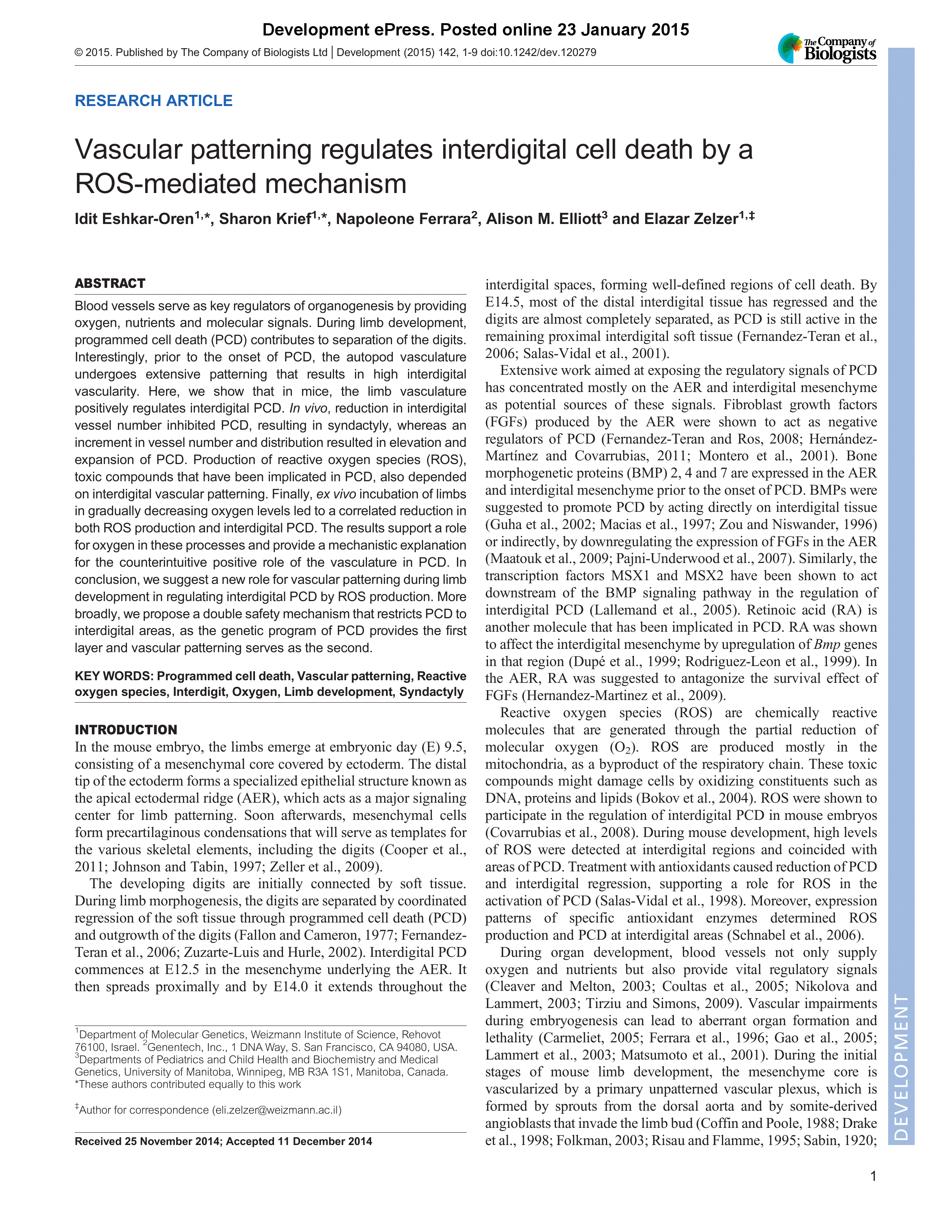Blood vessels serve as key regulators of organogenesis by providing oxygen, nutrients and molecular signals. During limb development, programmed cell death (PCD) contributes to separation of the digits. Interestingly, prior to the onset of PCD, the autopod vasculature undergoes extensive patterning that results in high interdigital vascularity. Here, we show that in mice, the limb vasculature positively regulates interdigital PCD. In vivo, reduction in interdigital vessel number inhibited PCD, resulting in syndactyly, whereas an increment in vessel number and distribution resulted in elevation and expansion of PCD. Production of reactive oxygen species (ROS), toxic compounds that have been implicated in PCD, also depended on interdigital vascular patterning. Finally, ex vivo incubation of limbs in gradually decreasing oxygen levels led to a correlated reduction in both ROS production and interdigital PCD. The results support a role for oxygen in these processes and provide a mechanistic explanation for the counterintuitive positive role of the vasculature in PCD. In conclusion, we suggest a new role for vascular patterning during limb development in regulating interdigital PCD by ROS production. More broadly, we propose a double safety mechanism that restricts PCD to interdigital areas, as the genetic program of PCD provides the first layer and vascular patterning serves as the second.
Vascular patterning regulates interdigital cell death by a ROS-mediated mechanism
These authors contributed equally to this work
Currently Viewing Accepted Manuscript - Newer Version Available
- Split-screen
- Views Icon Views
- Open the PDF for in another window
-
Article Versions Icon
Versions
- Version of Record 15 February 2015
- Accepted Manuscript 01 January 2015
- Share Icon Share
-
Tools Icon
Tools
- Search Site
Idit Eshkar-Oren, Sharon Krief, Napoleone Ferrara, Alison M. Elliott, Elazar Zelzer; Vascular patterning regulates interdigital cell death by a ROS-mediated mechanism. Development 2015; dev.120279. doi: https://doi.org/10.1242/dev.120279
Download citation file:
Advertisement
Call for papers: Uncovering Developmental Diversity

Development invites you to submit your latest research to our upcoming special issue: Uncovering Developmental Diversity. This issue will be coordinated by our academic Editor Cassandra Extavour (Harvard University, USA) alongside two Guest Editors: Liam Dolan (Gregor Mendel Institute of Molecular Plant Biology, Austria) and Karen Sears (University of California Los Angeles, USA).
Choose Development in 2024

In this Editorial, Development Editor-in-Chief James Briscoe and Executive Editor Katherine Brown explain how you support your community by publishing in Development and how the journal champions serious science, community connections and progressive publishing.
Journal Meeting: From Stem Cells to Human Development

Register now for the 2024 Development Journal Meeting From Stem Cells to Human Development. Early-bird registration deadline: 3 May. Abstract submission deadline: 21 June.
Pluripotency of a founding field: rebranding developmental biology

This collaborative Perspective, the result of a workshop held in 2023, proposes a set of community actions to increase the visibility of the developmental biology field. The authors make recommendations for new funding streams, frameworks for collaborations and mechanisms by which members of the community can promote themselves and their research.
Read & Publish Open Access publishing: what authors say

We have had great feedback from authors who have benefitted from our Read & Publish agreement with their institution and have been able to publish Open Access with us without paying an APC. Read what they had to say.



